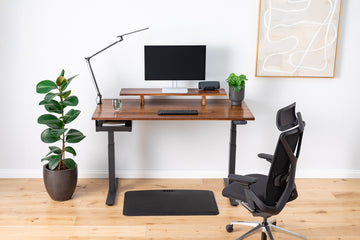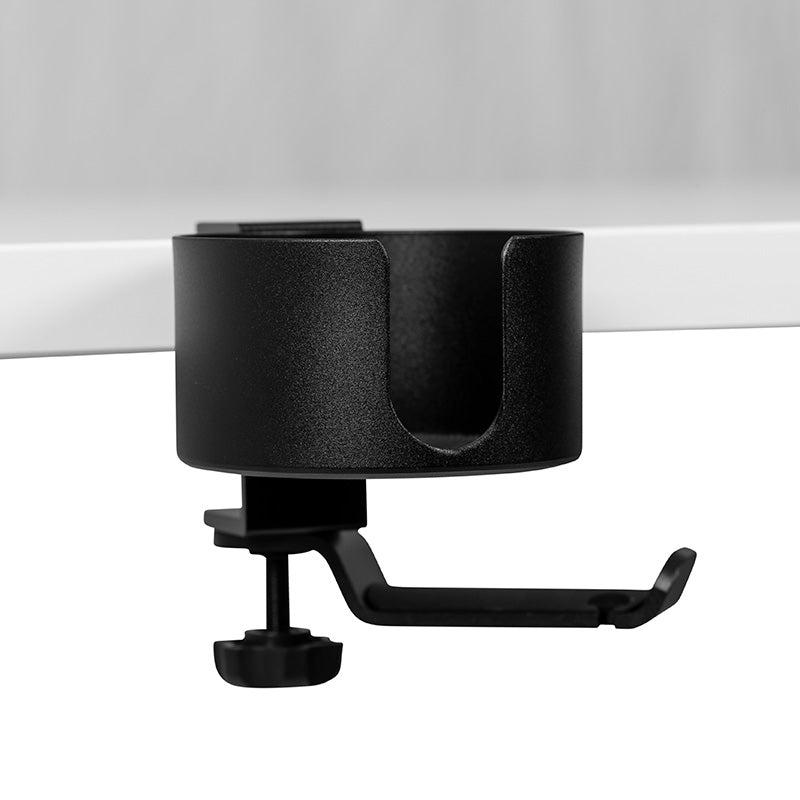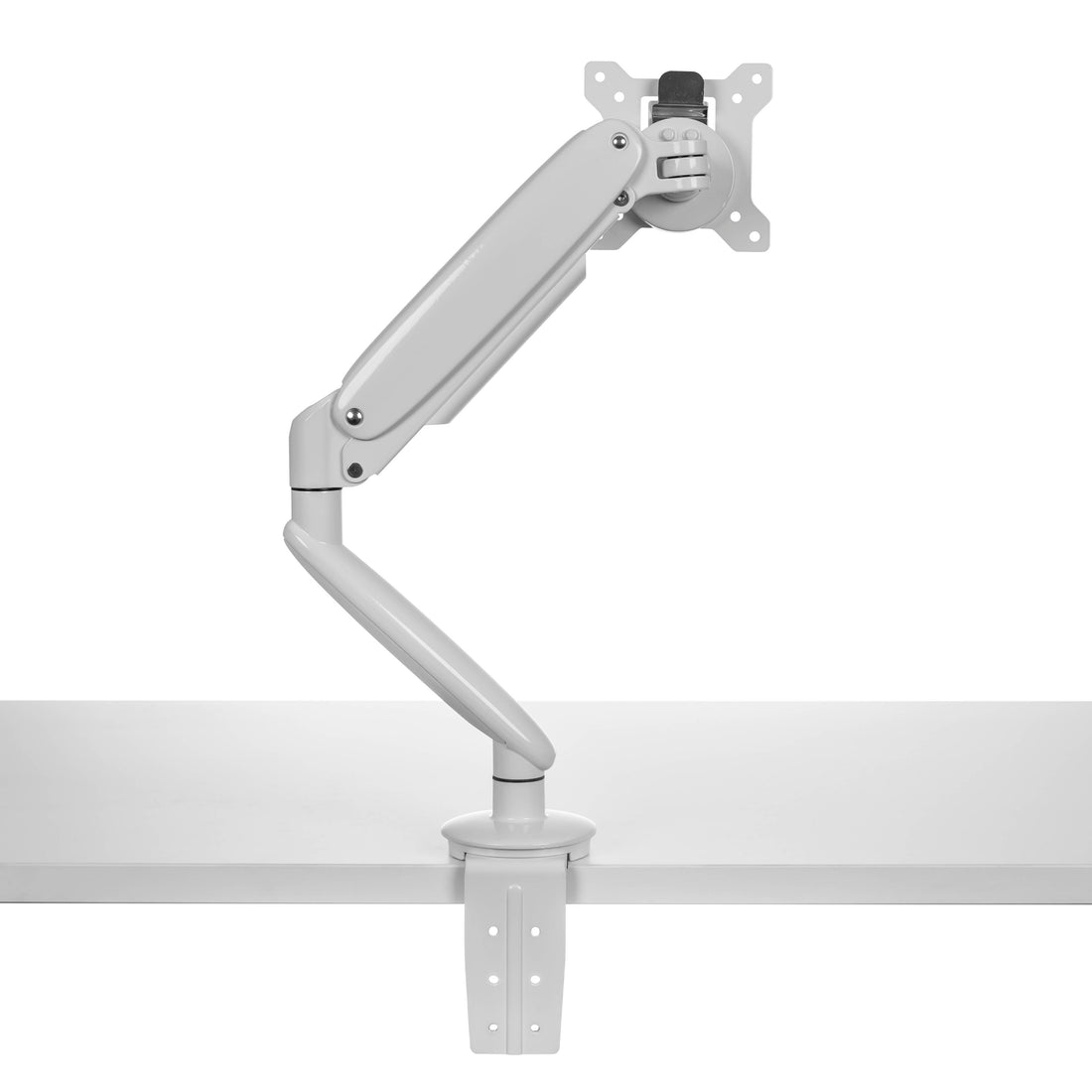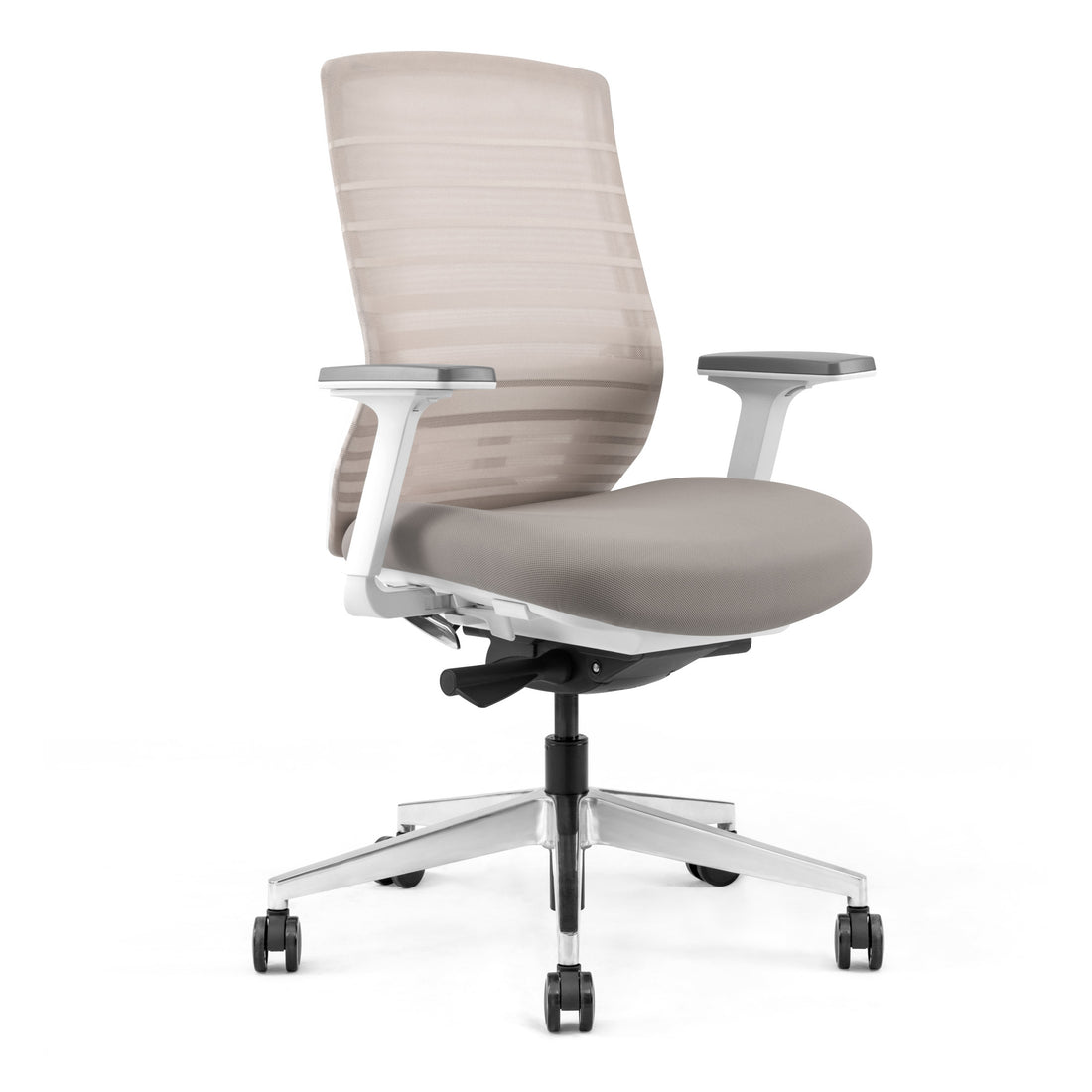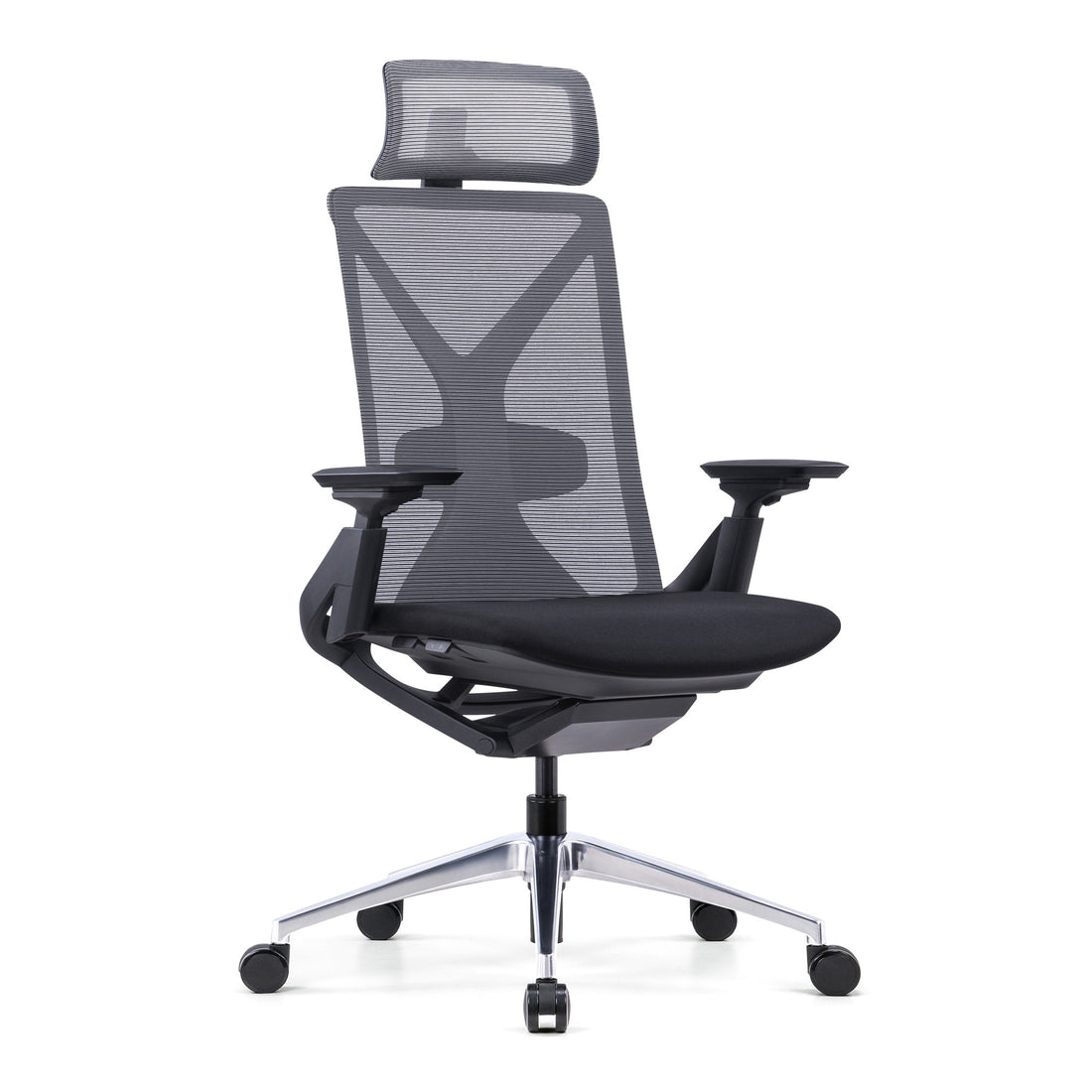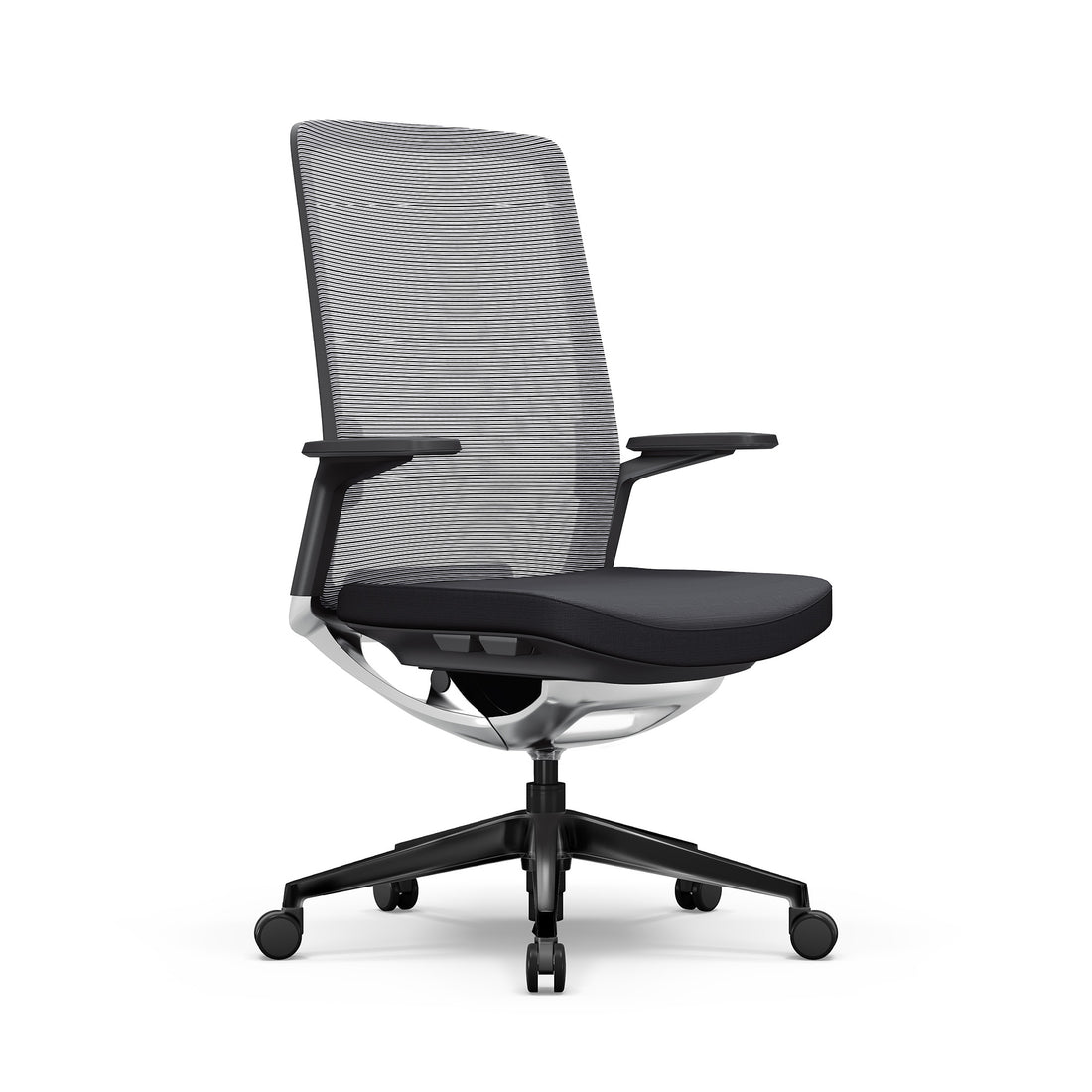Standing desks have become increasingly prevalent in modern workplaces, but the question remains: Are standing desks good for you? According to a growing body of research, the answer is generally affirmative. Numerous peer-reviewed studies indicate that standing desks can offer myriad health benefits, ranging from enhanced cardiovascular function to improved metabolic health. Furthermore, user experiences frequently highlight increased productivity and decreased discomfort associated with prolonged sitting. This article examines the science behind standing desks and why standing desks are good for you, shedding light on their benefits and potential drawbacks. We'll also address a common question people have: is standing at work better than sitting? This will help you decide if standing desks suit your work environment.
Understanding Standing Desks
What is a Standing Desk?
A standing or stand-up desk is an ergonomic workstation for individuals to work while standing. Unlike traditional desks, standing desks come in various configurations to suit different needs. The most common types include:
- Adjustable Standing Desks: These desks can be raised or lowered, allowing users to alternate between sitting and standing positions. This flexibility makes them a popular choice for those who want to enjoy the health benefits of standing desk use while avoiding the potential pitfalls of prolonged standing.
- Fixed Standing Desks: As the name suggests, these desks are set at a specific height and cannot be adjusted. While they are generally more affordable, they lack the versatility of adjustable models.
- Hybrid Desks: These combine traditional and standing desks' features. They often include a keyboard tray that can be adjusted independently of the main desk surface.
Standing desks are designed to reduce sedentary behavior, which has been linked to various health issues, including obesity, cardiovascular disease, and type 2 diabetes.

Why Standing Desks Are Popular
The rising popularity of standing desks can be attributed to several key factors:
- Health Awareness: As people become more aware of the health risks associated with prolonged sitting, many seek alternatives to traditional desks. Standing desks offer a straightforward way to incorporate more movement into the workday, thereby reducing the risk of chronic diseases.
- Workplace Wellness Initiatives: Many companies are now implementing wellness programs to improve employee health and productivity. Standing desks are often a central component of these initiatives, encouraging employees to adopt healthier work habits.
- Flexibility and Adaptability: Modern standing desks are designed to be versatile and user-friendly. Many models are easily adjustable, allowing for seamless transitions between sitting and standing, which can help prevent fatigue and discomfort.
What Science Says About Standing Desks
The buzz around standing desks isn't just a passing trend—science backs up many of their benefits. Let's dive into some of the most compelling research highlighting how standing desks can improve health and well-being.
Improved Worker Health and Reduced Discomfort
One of the most noteworthy studies, "Reducing Occupational Sitting Time and Improving Worker Health: The Take-a-Stand Project, 2011," published in Preventing Chronic Disease, sheds light on the positive impacts of standing desks. The research revealed that reducing occupational sitting time through sit-stand desks led to significant health improvements. Participants in the study reported less discomfort, particularly in the upper back and neck. They also experienced enhanced mood and increased energy levels, making the workday feel less like a slog and more like a breeze. The takeaway? Standing desks can transform a monotonous work routine into a more dynamic and comfortable experience.
Cardiometabolic Health and Sedentary Behavior
Another pivotal study, "Effectiveness of a workplace intervention to reduce sitting at work: the Stand Up Victoria cluster randomized trial," published in BMJ, offers valuable insights into the long-term benefits of standing desks. Over a 12-month period, participants using sit-stand desks reduced their sitting time by an impressive 1.3 hours per day. This reduction in sedentary behavior was associated with improvements in cardiometabolic health markers and a decrease in musculoskeletal issues. This study underscores the idea that standing desks are not just a fleeting fad but a viable solution for promoting a healthier lifestyle at work.
Alleviating Chronic Low Back Pain
Chronic low back pain is common among office workers and is often attributed to prolonged sitting. The study "Impact of a sit-stand workstation on chronic low back pain: results of a randomized trial," published in the Journal of Occupational and Environmental Medicine, provides compelling evidence that standing desks can offer relief. Participants who used sit-stand workstations reported a significant reduction in chronic low back pain compared to those who stayed seated all day. This finding suggests that standing desks could be a game-changer for alleviating pain and discomfort without resorting to medication or invasive treatments.
Enhanced Work Performance and Cognitive Function
Beyond physical health benefits, standing desks may also positively impact work performance and mental sharpness. The study "Effects of sit-stand workstations on work performance and cognitive function among office workers: A randomized controlled trial," published in the Scandinavian Journal of Work, Environment & Health, found that using sit-stand desks did not negatively affect work performance. In fact, participants reported feeling more alert and less fatigued, with some even noting improvements in cognitive function and job satisfaction. This suggests that standing desks can help keep the mind and body in tip-top shape, making them a smart investment for any workplace.

Practical Considerations for Standing Desks
Various practical aspects must be considered when transitioning to a standing desk to ensure a comfortable and productive work experience. Proper setup and ergonomic considerations are crucial to maximizing the benefits of standing desks while minimizing potential discomfort.
- Desk Height: When typing, the desk should be adjusted to a height where your elbows are at a 90-degree angle. This helps maintain a neutral wrist position and reduces the risk of carpal tunnel syndrome.
- Monitor Placement: Your monitor should be placed at or slightly below eye level, with the screen tilted slightly upward. This setup helps to prevent neck strain and promotes a comfortable viewing angle.
- Footwear and Flooring: Comfortable shoes with good support are essential when standing for extended periods. An anti-fatigue mat can also provide cushioning, reducing discomfort in the feet and legs.
- Movement: How long to stand at a standing desk is a very important question. Alternating between sitting and standing throughout the day is recommended. A common suggestion is the 20-8-2 rule: spend 20 minutes sitting, 8 minutes standing, and 2 minutes walking or stretching. This approach helps prevent muscle fatigue and maintains circulation.
Ergonomic Tips for Standing Desks
To optimize the benefits of a standing desk, it’s crucial to avoid bad desk ergonomics, which can negate the advantages and even lead to discomfort. Consider the following ergonomic tips:
- Maintain Proper Posture: Stand upright with your shoulders relaxed and your back straight. Avoid leaning forward or slouching, as this can lead to discomfort and strain.
- Use a Footrest: A footrest can help to distribute your weight more evenly and provide a comfortable place to rest your feet. It can also help to prevent lower back pain by allowing you to shift your weight.
- Take Regular Breaks: Even when using a standing desk, it's essential to take regular breaks to move around. This helps maintain blood flow and prevent muscle and joint stiffness.
| Practical Considerations | Benefits |
| Desk Height | Prevents wrist strain |
| Monitor Placement | Reduces neck strain |
| Comfortable Footwear | Minimizes foot and leg discomfort |
| Anti-Fatigue Mat | Provides cushioning and support |
| Movement and Breaks | Maintains circulation and prevents fatigue |
Is it better to work standing or sitting? The debate between standing and sitting at work is complex, with arguments on both sides. Standing desks are often touted as a healthier alternative to traditional desks but are challenging. Understanding the pros and cons of both positions can help you make an informed decision about your workspace setup.
Benefits of Standing:
- Increased Caloric Burn: Standing burns more calories than sitting, contributing to weight management and reducing the risk of obesity.
- Improved Posture: Standing encourages better posture and can reduce the risk of musculoskeletal disorders.
- Enhanced Alertness: Many users report feeling more alert and less fatigued when standing, which can enhance productivity and focus.
Drawbacks of Standing:
- Leg and Foot Discomfort: Standing for long periods can lead to discomfort in the legs and feet, including issues like varicose veins and plantar fasciitis.
- Potential for Fatigue: Standing can cause fatigue and strain on the lower back and legs without proper breaks and ergonomic setup.
Benefits of Sitting:
- Comfort: Sitting is generally more comfortable for longer periods and is particularly beneficial for tasks that require fine motor skills or detailed focus.
- Reduced Leg Strain: Sitting reduces the load on the legs and feet, which can prevent discomfort and fatigue.
Drawbacks of Sitting:
- Increased Risk of Health Issues: Prolonged sitting is associated with a higher risk of metabolic disorders, cardiovascular diseases, and musculoskeletal problems.
- Potential for Poor Posture: Many people tend to slouch or hunch over when sitting, leading to back and neck pain.

Are Standing Desks Good for Common Health Concerns?
Back Pain
Back pain is a prevalent issue among office workers, often exacerbated by poor posture and prolonged periods of sitting. Standing desks can alleviate this issue by promoting better posture and reducing the strain on the lumbar spine. The question "Is standing good for your back?" often arises in this context. When standing, the spinal column is in a more neutral position, which can help prevent the compression of spinal discs and reduce the risk of chronic back pain. Additionally, standing desks encourage users to engage their core muscles, providing additional support to the spine. This engagement can help improve overall muscle tone and prevent the development of muscle imbalances that often result from prolonged sitting.
Hip Pain
While standing desks offer numerous benefits, they can also lead to hip discomfort if not used correctly. Standing desk hip pain may occur when standing for extended periods without proper posture or adequate breaks. To prevent hip pain, it is essential to maintain a slight bend in the knees and shift your weight between your feet. Using a footrest can also help alleviate pressure on the hips by allowing you to change positions frequently.
Varicose Veins
Prolonged standing can increase the risk of developing varicose veins, a condition characterized by swollen, twisted veins visible just under the skin. This occurs when blood pools in the veins due to gravity, leading to venous insufficiency. To mitigate the risk of varicose veins, it is recommended to:
- Wear compression stockings: These garments help improve blood flow and prevent blood from pooling in the veins.
- Take regular breaks: Alternating between sitting and standing can help maintain proper circulation.
- Elevate your legs: When sitting, prop your feet up on a footrest or other elevated surface to help blood flow back toward the heart.
Wrist Pain
Wrist pain is another common issue associated with desk work, often resulting from improper keyboard and mouse placement. Several strategies exist for those wondering how to prevent wrist pain from computer use, especially when using a standing desk. To avoid wrist pain, ensure that your wrists are neutral. This can be achieved by:
- Using an ergonomic keyboard: These keyboards are designed to reduce wrist strain by promoting a more natural hand position.
- Adjusting the height of your desk: The desk should be at a height where your forearms are parallel to the ground and your wrists are not bent upwards or downwards.
- Using a wrist rest: A wrist rest can provide additional support and help maintain proper wrist alignment.
| Health Concern | Recommendations |
| Back Pain | Maintain proper posture, engage core muscles, and use a footrest |
| Hip Pain | Shift weight frequently, use a footrest, and avoid locking your knees |
| Varicose Veins | Wear compression stockings, take breaks, elevate your legs |
| Wrist Pain | Use an ergonomic keyboard, adjust desk height, use wrist rest |
Are Standing Desks Good for You: Conclusion
Scientific evidence strongly supports using standing desks to counteract the adverse effects of prolonged sitting. Studies have shown that reducing sedentary time can lead to better metabolic outcomes, including improved glucose regulation and insulin sensitivity and a lower risk of cardiovascular diseases. This evidence highlights why standing desks are good, as they can also contribute to a more dynamic and engaging work environment, potentially boosting productivity and overall job satisfaction.
Incorporating a standing desk into your daily routine can be a valuable investment in your health and well-being. However, listening to your body and finding a balance that works for you is crucial. Combining standing and sitting, regular breaks, and proper ergonomic practices can help create a more comfortable and productive workspace. As with any health-related decision, consulting with a healthcare professional or ergonomic specialist can provide personalized recommendations and ensure that your setup meets your specific needs.
In conclusion, while standing desks are not a one-size-fits-all solution, they offer significant potential benefits for improving their health and productivity. By understanding the science behind standing desks and implementing best practices, you can make an informed choice that supports your long-term well-being.
References
- "Reducing Occupational Sitting Time and Improving Worker Health: The Take-a-Stand Project, 2011", Preventing Chronic Disease,
- "Effectiveness of a workplace intervention to reduce sitting at work: the Stand Up Victoria cluster randomized trial", BMJ,
- "Impact of a sit-stand workstation on chronic low back pain: results of a randomized trial", Journal of Occupational and Environmental Medicine,
- "Effects of sit-stand workstations on work performance and cognitive function among office workers: A randomized controlled trial", Scandinavian Journal of Work, Environment & Health.
FAQ
Why Are Standing Desks Good For You?
Standing desks offer numerous health benefits. Incorporating standing into your workday can reduce back pain, improve posture, and boost energy levels. Standing desks help combat the negative effects of prolonged sitting, such as increased risk of obesity and heart disease. A standing desk can ultimately contribute to a healthier and more active lifestyle.
Is Standing Desk Good For You?
Yes, standing desks are beneficial for overall health and well-being. They encourage movement and help combat the sedentary lifestyle associated with many modern jobs.
Does a Standing Desk Make a Difference?
Absolutely. Standing desks can significantly improve your physical and mental health. Incorporating standing into your workday can reduce fatigue, increase focus, and enhance productivity.
Does Standing Desk Help?
Yes, standing desks can help alleviate various health issues related to prolonged sitting, including back pain, neck pain, and digestive problems. They promote better circulation and can even boost your mood.
Is a Standing Desk Better?
While standing desks offer numerous advantages, finding a balance between sitting and standing is essential. Both have their benefits. A standing desk is an excellent tool for increasing activity levels and improving overall well-being when used in conjunction with proper ergonomics and regular movement.
Should I Use a Standing Desk?
If you spend long hours sitting at a desk, it's highly recommended that you incorporate a standing desk into your routine. It's a simple yet effective way to improve your health and productivity. Remember to listen to your body and gradually increase standing time to avoid discomfort.


